Lynx Reintroduction in the UK
The Eurasian Lynx could make a return to the UK after a absence of 1300 years, after a proposal to reintroduce them into Kielder Forest has been submitted by the Lynx Trust.
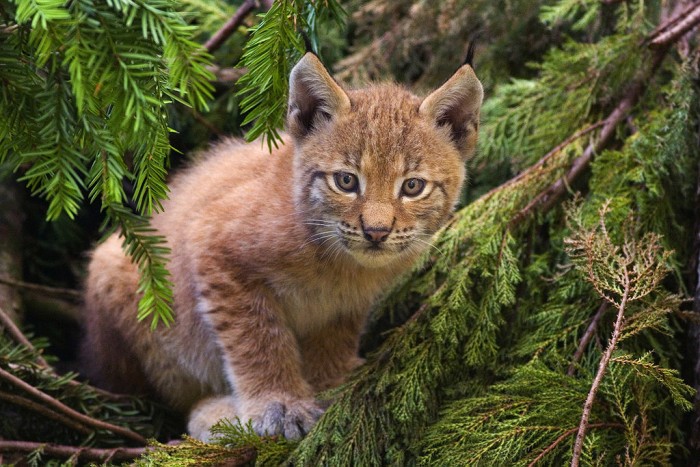 Image: "Lynx kitten" by taken by Bernard Landgraf - Own work. Licensed under CC BY-SA 3.0 via Commons - https://commons.wikimedia.org/wiki/File:Lynx_kitten.jpg#/media/File:Lynx_kitten.jpg
Image: "Lynx kitten" by taken by Bernard Landgraf - Own work. Licensed under CC BY-SA 3.0 via Commons - https://commons.wikimedia.org/wiki/File:Lynx_kitten.jpg#/media/File:Lynx_kitten.jpg The Eurasian lynx could once again be stalking through British woodlands, for the first time in 1,300 years. Plans have been submitted by the Lynx Trust for a licence to import six cats and reintroduce the species into Northumberland’s Kielder Forest. The Trust says that, since we hunted them to extinction for their fur, not only do they “belong” in Britain, we also have a “moral obligation” to bring them back. Despite fears from sheep farmers, who claim that their livestock would be put at risk, their return could generate millions of pounds for rural communities by attracting tourists.
In a statement, the Trust said: “In many other countries Eurasian lynx reintroduction has proven exceptionally low-conflict and wonderfully beneficial for the local communities that live alongside them, and we do sincerely hope that these cats, which thrived here for millions of years, do have the opportunity to prove they can still fit into both our ecology, and alongside local communities like those across the Kielder region.”
The Lynx Trust applied to Natural England for permission to release the cats after it carried out a 20-month consultation of local people and wildlife organisations. The scheme will initially involve the reintroduction of six young adult lynx, four females and two males. The animals will be imported from Sweden, where there is a thriving population, for a five-year trial. They will be fitted with GPS tracking collars which will report their location at all times. Kielder Forest was chosen to be the site of the trial due to its large size, few roads and abundance of deer, the species’ main prey. No date has been set for the proposed reintroduction but, if the plans are approved, we could see their return by the end of the year.
Dr Paul O’Donoghue, chief scientific advisor to the Lynx Trust and expert adviser to the International Union for the Conservation of Nature (IUCN) believes there are good reasons for reintroducing the predator. In an interview with The Guardian newspaper, he said: “Lynx belong here as much as hedgehogs, badgers, robins, blackbirds – they are an intrinsic part of the UK environment. There is a moral obligation. We killed every single last one of them for the fur trade, that’s a wrong we have to right.”
The National Sheep Association, which represents farmers, said that it “fully opposed” the proposal. “Even if compensation were offered, it will not make sheep mortalities acceptable and, given the general public’s reaction to some of the harrowing images caused by domestic dog attacks and their expectation of high animal welfare, I cannot see how distressing attacks caused by a wild animal will be accepted,” said chief executive Phil Stocker. “The species has been absent from the UK for thousands of years, and our countryside now is far too fragmented and built up to support a viable population of lynx. We are confident that pastoral livestock farming already delivers a highly attractive countryside with environmental, economic and social benefits. I cannot accept that lynx could improve or deliver anything more.”
But the Lynx Trust insist that the fear of the cats is not justified. O’Donoghue said: “You will never see a lynx running across an open field chasing down prey – they can’t do it. They are the epitome of a forest specialist – their coat is dappled.” He said research across Europe has shown that wild lynx kill only one sheep every two and half years, while millions of sheep are lost each year in the UK to malnutrition, disease and exposure. “We completely understand the perceived risk of lynx, but it is only perceived.” It is also important to note that there have been no recorded attacks on humans by lynx.
Lynx may even be good news for farmers, as they have a far greater appetite for foxes than sheep, so could reduce fox-on-sheep predation. And what they will definitely be good for is the ecotourism industry. “They will generates tens of millions of pounds for struggling rural UK economies. Lynx have already been reintroduced in the Harz Mountains in Germany. They have branded the whole area the ‘kingdom of the lynx’. Now it is a thriving ecotourism destination and we thought we could do exactly the same for Kielder,” said O’Donoghue.
In addition, lynx would boost the natural environment by reducing the overgrazing of deer and thus allowing other wildlife to flourish, especially as the UK is one of the most biodiversity poor countries in the world. Ultimately, the lynx could be an ambassador for British conservation, which sadly lags woefully behind Europe.
The next stage in the process is for Natural England to consider the application under existing laws and the IUCN guidelines for reintroductions, which the Lynx Trust says it has followed, and it requires the trial reintroduction to have a exist strategy. A spokeswoman for Natural England stated: “Any decision to grant a licence to reintroduce lynx into the wild in England will be based on the impacts on affected communities, the wider environment and follow international guidelines.”
Paul O’Donoghue is confident that their proposal will be successful. “We have taken the concerns of stakeholders and used them to design a project plan which we believe mitigates any risk. At this time we do not see any reasons why a licence would not be forthcoming.”
If the trial release goes well, more reintroductions could be planned – the Lynx Trust cites Thetford Forest, Grisedale Forest, Aberdeenshire and the West Coast of Scotland as possible future release locations. It is estimated that the Southern Uplands, of which Kielder is part, could support up to 100 lynx. The UK as a whole could potentially have 400 lynx. Although lynx are secretive, solitary and elusive animals, we may soon experience the thrill of knowing that they are back where they belong, in the woodlands of Britain.

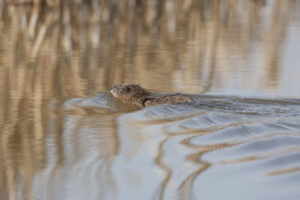
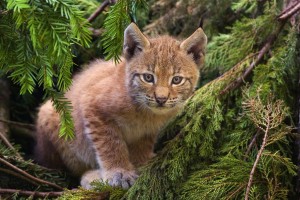
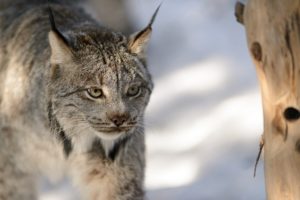
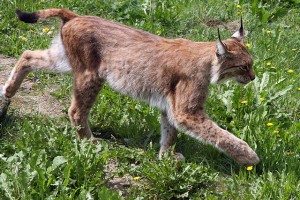
3 Comments
Fabulous article and great to see that the concerns of farmers are addressed with science-based information.
This article has made my smile. While i was at university i did a presentation about the reintroduction of Lynx in the UK, I’m glad it may finally become a reality!
I have a field full of sheep right next to Kielder Forest, but I say… Bring back the lynx, the UK’s long lost predator. Lets restore our landscapes to their former glory. If they wanna subsidize me for turning my farm into a forest then so be it!